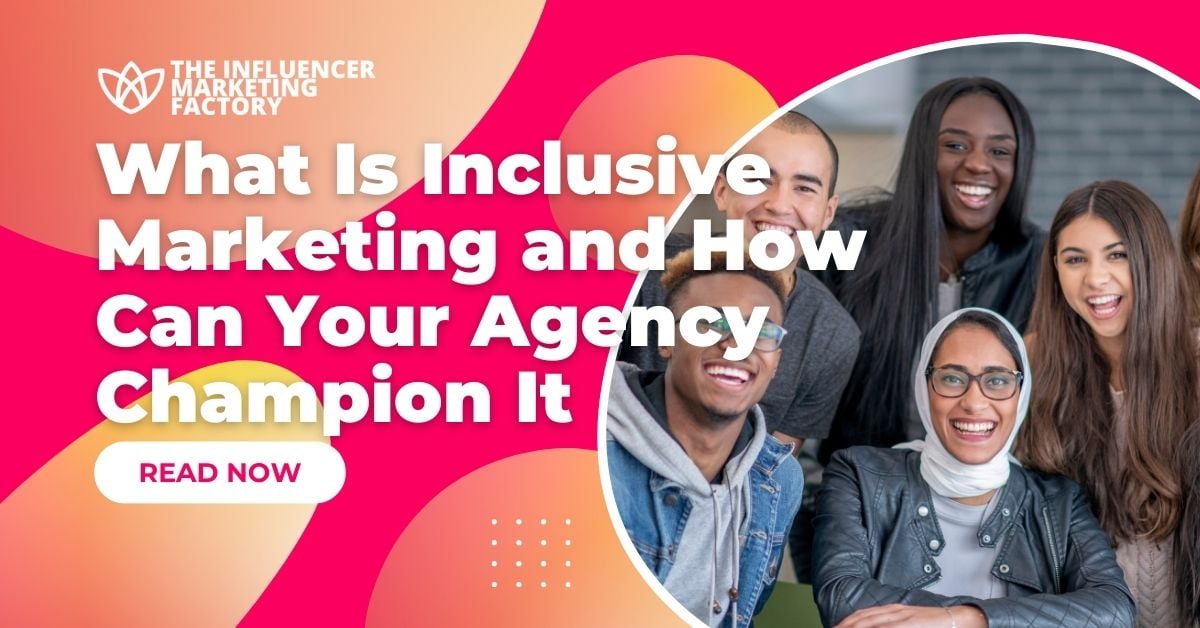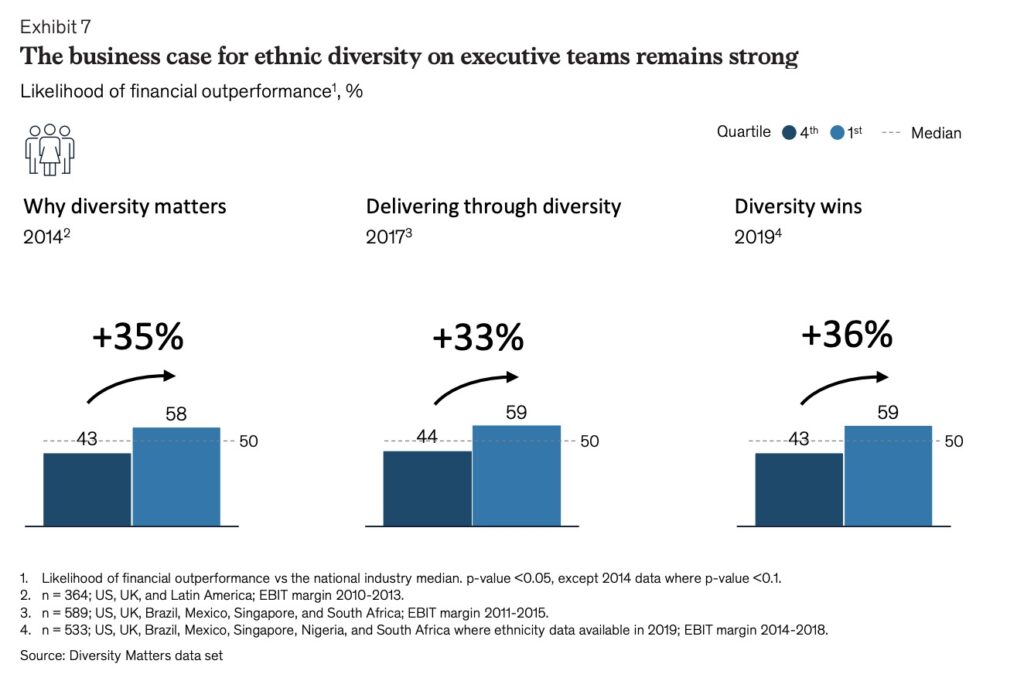
14 Dec What Is Inclusive Marketing and How Can Your Agency Champion It
Did you know that companies with diverse executive teams are 36% more likely to achieve above-average profitability?
Inclusive marketing is a marketing trend and a strategic approach where your agency has a key role to play in supporting inclusivity. It’s a technique to highlight diversity in your organization and appeal to the public through advertising campaigns.
Creating a positive image is the heart and brain of any marketing strategy where people can feel content while connecting or purchasing from your brand. Let’s explore what inclusive marketing is and discover practical steps to ensure your campaigns resonate across diverse audiences.
What Is Inclusive Marketing?
Inclusive marketing is an approach to advertise the diversity in your organization through your promotional campaigns. Here, you promote your brand in a positive light and appeal to the public sentiments that your agency has people from diversified backgrounds, cultures, genders, abilities, and identities.
It aims to create content that reflects the same and makes employees of your organization feel represented and included. The goal is to connect with a diverse audience, cultivate a sense of belonging, and avoid perpetuating stereotypes or exclusionary practices.
This marketing tactic can involve various channels such as digital paid ad campaigns, email marketing campaigns, SMS marketing campaigns, and others. Overall, you should be promoting inclusivity in your organization through all the marketing channels available at your disposal.
Key Principles of Inclusive Marketing
Inclusive marketing is founded on several key principles. Let’s explore what those are:
Diversity and Representation
Inclusive marketing begins with a commitment to showcasing the richness of human diversity. Your brand should actively seek representation from various races, ethnicities, genders, sexual orientations, ages, and abilities in their campaigns. This not only broadens the appeal of the content but also resonates with a wider audience.
A McKinsey report found that inclusion and diversity are getting stronger as Gender and Ethnicity in companies have steadily increased.
To truly embrace inclusivity, steer clear of perpetuating stereotypes. Stereotypical portrayals not only limit the authenticity of marketing efforts but can also reinforce harmful biases.
Accessibility
Inclusive marketing demands that content be accessible to all individuals, regardless of their physical or cognitive abilities. This involves designing websites, advertisements, and other marketing materials with features such as alt text, captions, and readable fonts. By prioritizing accessibility, brands make their content available to a broader audience.
Additionally, marketers must acknowledge the diverse range of abilities and disabilities within their target audience. This includes creating content that can be easily consumed by individuals with visual or auditory impairments.
Cultural Sensitivity
Understanding and respecting the intricacies of different cultures is paramount in inclusive marketing. Brands should invest time in researching and appreciating cultural nuances to avoid unintentional misrepresentations.
Also, be vigilant about avoiding cultural appropriation and refrain from borrowing elements of a culture without proper understanding or respect.
Benefits of Inclusive Marketing
Inclusive marketing is like opening your arms to everyone, and it’s not just a nice gesture – it’s smart business. Here’s why:
- Connecting with Diverse Demographics: Inclusive marketing allows businesses to break down barriers and connect with a broader range of demographics.
- Tapping into Niche Markets: An inclusive approach enables businesses to tap into niche markets that may have been overlooked.
- Global Expansion: In an interconnected world, where borders are increasingly porous, inclusive marketing facilitates global expansion.
- Building Trust: Consumers today value authenticity and inclusivity. By embracing diversity in marketing campaigns, businesses build trust with their audience.
- Fostering Loyalty: Inclusive marketing fosters a sense of belonging among consumers as they feel seen and heard, and are more likely to develop loyalty to your brand.
- Positive Public Perception: Inclusivity positively impacts a brand’s public perception and companies that champion it are viewed as socially responsible and progressive.
- Driving Social Change: Inclusive marketing campaigns have the potential to challenge stereotypes, break down biases, and drive positive social change by promoting acceptance and understanding.
- Supporting Diversity and Inclusion Initiatives: Businesses can actively contribute to societal progress by aligning their marketing efforts with broader diversity and inclusion initiatives.
How Your Agency Can Champion Inclusive Marketing
Championing inclusive marketing is crucial for any agency. Here are some strategies your agency can implement to champion inclusive marketing:
- Understand Your Audience
Conduct thorough research to understand your target audience’s demographics, preferences, and cultural nuances. Recognize and appreciate the diversity within your audience, and avoid making assumptions based on stereotypes.
- Diverse Representation
Ensure that your marketing materials, including images, videos, and messaging, reflect diversity in terms of race, ethnicity, gender, age, abilities, and other relevant factors. Use a variety of models and spokespersons to showcase the diversity of your customer base.
- Inclusive Language
Choose language that is inclusive and avoids stereotypes or exclusive terminology. Be mindful of cultural sensitivities and language preferences within your target audience.
- Accessibility
Make your marketing materials accessible to individuals with disabilities. This includes ensuring that your website, videos, and other content comply with accessibility standards. Consider various formats, such as subtitles, alt text, and multiple language options.
- Cultural Competence
Train your marketing team on cultural competence to avoid unintentional cultural insensitivity. Collaborate with individuals who represent the cultures you are targeting to ensure authenticity and avoid cultural appropriation.
- Community Engagement
Actively engage with your community to understand its needs and preferences. Support and participate in events and initiatives that promote diversity and inclusion.
- Feedback Mechanisms
Encourage feedback from your audience regarding your marketing campaigns. Be open to constructive criticism and be willing to adapt your strategies based on feedback.
- Internal Diversity and Inclusion
Ensure that your internal team reflects diversity. A diverse team can bring different perspectives and insights to your marketing efforts. Foster an inclusive workplace culture that values diversity.
- Partner with Inclusive Organizations
Collaborate with organizations that focus on diversity and inclusion to gain insights and support for your marketing initiatives.
- Continuous Learning
Stay informed about evolving cultural trends and changes in societal norms. Adapt your marketing strategies to reflect the ever-changing landscape of diversity and inclusion.
Measurement and Evaluation for Inclusivity Strategies
Measurement and evaluation are crucial components of any marketing strategy. Here are some key considerations for measuring and evaluating inclusive marketing strategies:
Demographic Representation: Track the diversity metrics within the organization, focusing on the representation of various demographics such as gender, ethnicity, age, and abilities. KPIs can include the percentage of underrepresented groups in leadership positions and the overall workforce.
Employee Engagement Surveys: Design and implement surveys that gauge the level of inclusivity perceived by employees. KPIs in this category can include scores related to feelings of belonging, psychological safety, and equal opportunities.
Training and Development Metrics: Assess the effectiveness of inclusivity training programs by monitoring participation rates, post-training surveys, and evaluating any subsequent changes in behavior or attitudes. KPIs here could involve the percentage increase in awareness or understanding of inclusivity topics.
Promotion and Advancement Rates: Evaluate the promotion rates of employees from different demographics to ensure that career progression is equitable. KPIs may include tracking the percentage of promotions for individuals from underrepresented groups.
Inclusive Culture Indicators: Develop KPIs that measure the organization’s commitment to fostering an inclusive culture. This could involve tracking the implementation of diversity and inclusion initiatives, the existence of employee resource groups, and the demonstration of inclusive leadership behaviors.
Conclusion
Inclusive marketing is an ongoing dialogue with your audience. Keep the conversation alive by actively seeking feedback, engaging with diverse communities, and staying attuned to the ever-evolving landscape of inclusivity.
Your agency’s ability to adapt and respond to changing dynamics will be crucial in ensuring that your marketing efforts remain relevant and resonant.




